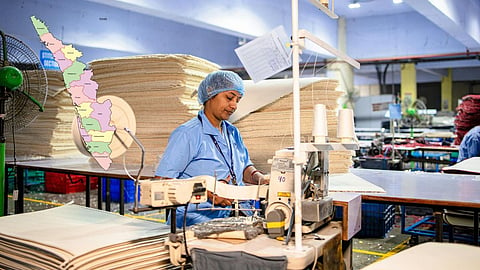

The Reserve Bank of India (RBI) has barred regulated entities from entering into default loss guarantee (DLG) arrangements on loans that are already covered under credit guarantee schemes. The move is expected to push up lending rates for micro, small and medium enterprises (MSMEs), according to industry officials.
Currently, most loans extended to MSMEs are backed by credit guarantee schemes such as the one operated by the Credit Guarantee Fund Trust for Micro and Small Enterprises (CGTMSE). These schemes reduce the risk of lending by providing partial guarantees to banks and non-banking financial companies (NBFCs). Such loans attract zero risk weight in the books of lenders.
Until now, NBFCs were also relying on separate DLG arrangements, typically offered by loan service providers (LSPs), to recover up to 5% of the losses in case a borrower defaulted. These arrangements offered a second layer of protection over and above the credit guarantee schemes.
With the RBI’s new rule in place, NBFCs can no longer use DLGs for loans that are already guaranteed. This effectively increases their risk exposure.
NBFCs have indicated that the change will likely lead to higher interest rates on MSME loans, as lenders will need to account for potential losses by making additional provisions.
“If a loan under the credit guarantee scheme was earlier given at 12%, it may now go up to 15%,” reportedly said a senior official at an NBFC. “We have to absorb the loss if it turns bad. With no DLG support, we’ll need to make higher provisions, which will reflect in the pricing.”
The MSME segment has been a focus area for policymakers in recent years, with a strong push to improve credit access. The credit guarantee scheme was designed to support this effort by encouraging lenders to finance small and often high-risk enterprises.
However, the RBI’s restriction is seen as an attempt to avoid excessive layering of guarantees that could distort credit discipline. NBFCs now face the challenge of balancing increased risk with continued growth in MSME lending.
“MSME loans will become expensive by at least the DLG margin, or even more,” said another NBFC executive. “The segment is already sensitive. With no DLG, the burden of defaults is entirely on us, even if the loan is under a guarantee scheme.”
According to RBI data, MSMEs accounted for 8.9% of total NBFC credit as on March 31, 2024 — up from 7.9% in 2023 and 6.5% in 2022. NBFCs also raised their share in total MSME lending (by both banks and NBFCs) to 11.7% in FY24, with service-oriented businesses drawing more credit than manufacturing ones.
Analysts believe the new regulation could dampen this growth trend, especially for smaller NBFCs with limited capacity to absorb higher provisioning costs.